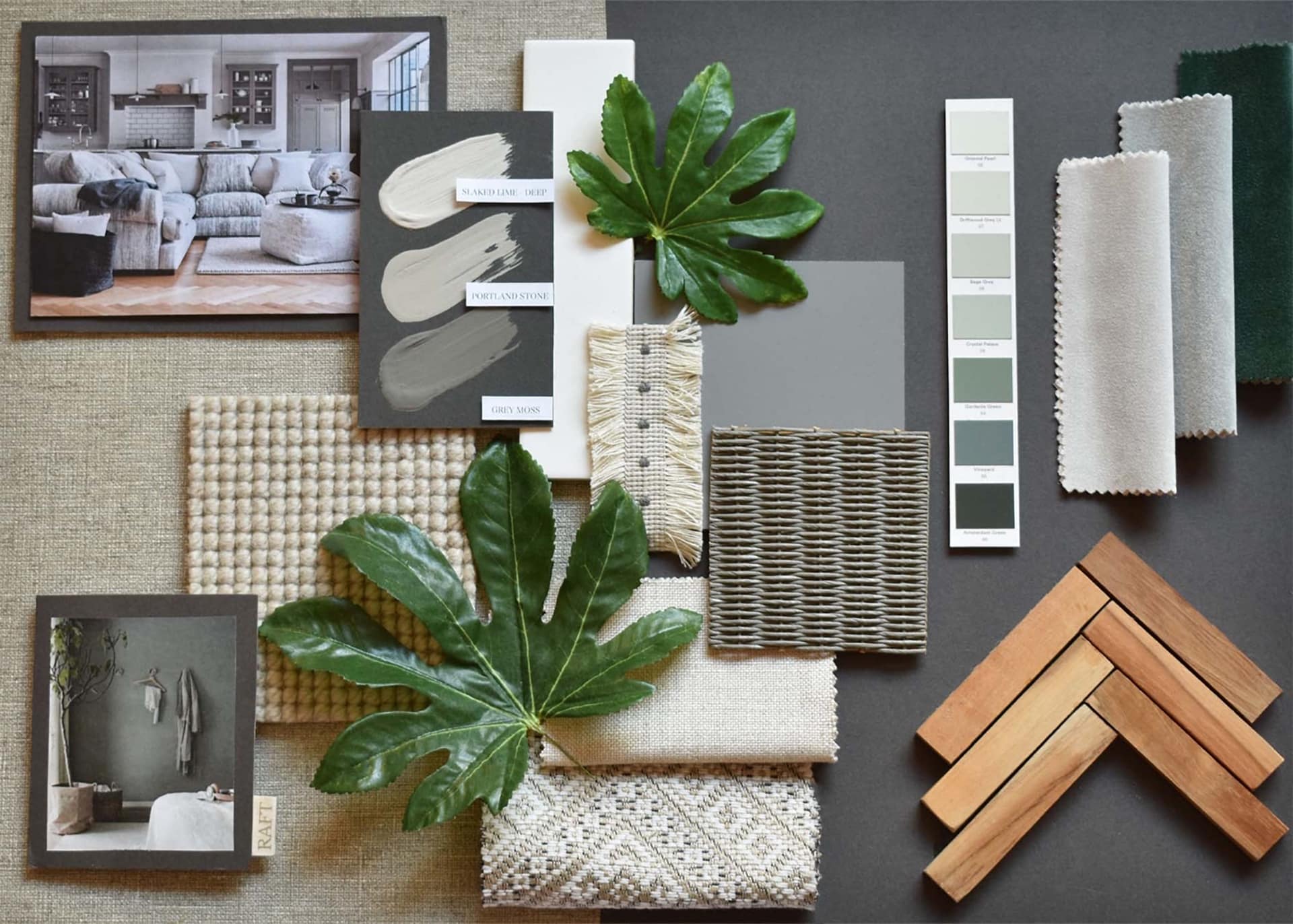
Building stimulating, comfortable, and even relaxing environments has been proven to positively influence a person’s productivity and mood, as well as sensory experience – broadly known as visual ASMR.
How Generative AI is used in mood-based design
Mood-based design is a concept that involves designing products, services, or experiences with a particular mood or emotional response in mind. It focuses on evoking specific emotions or feelings in an audience through design elements such as colour, typography, imagery, and patterns.
Creative processes can also be optimised and mood selection is an example of this. By analysing human cues and responses to stimuli, designers can better understand what feelings different environments evoke in a person. It’s very common to see a dimmed candlelit room, with cosy furniture and immediately feel relaxed, but in most cases, all is subjective to the individual.
Interior design and AI generated mood boards

Mood board generators are a prime example of the application of generative AI in mood-based design. An AI-powered software that enables designers to create visual canvases made up of lighting options, furniture arrangements, and colour choices, the technology is able to produce a variety of combinations based on the personal preferences of clients and designers.
A good example of this is Moodboard AI. You let the technology know what your style aspirations are and it will create a comprehensive and varied mood board based on this. It also offers a database of furniture and fabrics, so you can keep up with the latest trends.
Experiential mood-based design
With the rise of ASMR exhibitions, the application of generative AI poses ample opportunities for curators and artists to get innovative with the sensory experience of art. The Turkish-American artist Refik Anadol is renowned for pioneering the aesthetics of machine intelligence – often using technologies such as LiDAR and photogrammetry to formulate stimulating representations of natural phenomena. His aim is both informative and immersive – demonstrating the potential AI has in experiential environments.
At a deeper and more psychological level, Markos Kay and Jesse Solomon Clark’s ‘Latent Spaces’ exhibition immersed its audience in four captivating spaces within the London-based experiential art hub, Illusionaries. Each space explored a different narrative of the relationship between artificial intelligence and humanity’s collective unconscious.

Using AI to analyse emotional intent in art
Even as far back as 2021, Stanford University’s Institute for Human-Centred AI (HAI) were exploring how artificial intelligence has the ability to recognise emotions in visual art. A project was undertaken using an AI algorithm called ‘ArtEmis’ to analyse intent in and emotional response to classic artwork, such as Jan Vermeer’s ‘Girl with a Pearl Earring’ and Salvador Dali’s ‘The Persistence of Memory’. The project emphasised interdisciplinary collaboration between AI researchers and artists in developing a deeper understanding of the emotional impact of visual art. The long-term goal of ArtEmis is to aid creators with analysing their work, to ensure that it delivers on the desired emotional intent..
The intersectionality of AI and design
Mood-based design and generative AI offer incredible potential for creating customised spaces and experiences. Through AI, designers can optimise a number of creative processes and customise experiences that are able to evoke specific emotional responses. From customised mood boards to virtual art displays, AI integration in design will keep providing exciting possibilities for artistic expression. The understanding of the emotional impact of visual art is now further enhanced by the cooperation between AI and the creative industries, leading to more immersive and emotional experiences. As a result, we can only expect to see AI integration into more artistic fields in the coming years.
Need help in marketing your AI based design software? We can help! Drop us a line using the contact form below or you can further explore the services we offer here.

©️2024 Grammatik Agency, Second Home, 125–127 Mare St, London E8 3SJ.
[email protected]
+44 (0)20 3950 7057 Privacy policy